
| Blue Moon or Varied Eggfly NYMPHALINAE, NYMPHALIDAE, PAPILIONOIDEA | (donherbisonevans@yahoo.com) and Stella Crossley |
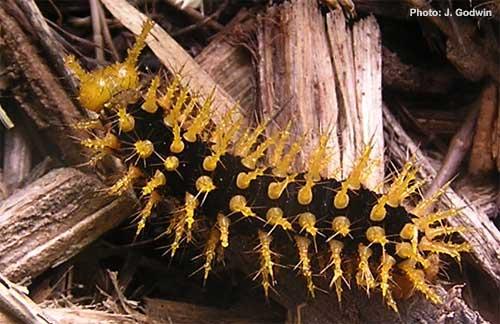
caterpillar with orange horns
(Photo: courtesy of Jutta Godwin,
Cubberla-Witton Catchments Network,
Brisbane, Queensland)

| Blue Moon or Varied Eggfly NYMPHALINAE, NYMPHALIDAE, PAPILIONOIDEA | (donherbisonevans@yahoo.com) and Stella Crossley |

caterpillar with orange horns
(Photo: courtesy of Jutta Godwin,
Cubberla-Witton Catchments Network,
Brisbane, Queensland)
The common name for this species, Eggfly, is a reference to the white oval patch on the forewing of the male butterflies of this species.
The Caterpillar is cylindrical and black, with orange tubercles all over the body, and a pair of tubercles on its head which can be either black or orange.
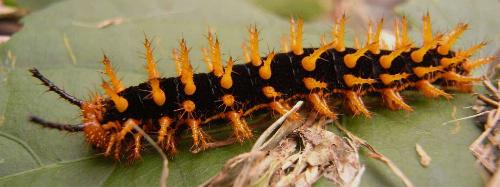
The caterpillars have been reported feeding on plants from a variety of families, including:
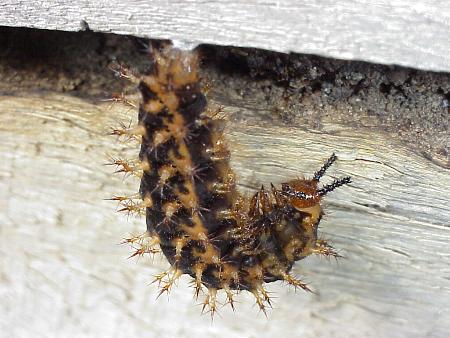
The caterpillars are intially communal, but later instars become solitary. They feed at night, hiding by day some distance from their foodplant. They can grow to a length of about 6 cms.
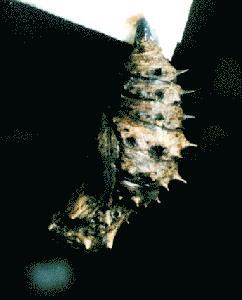
The pupa is brown with black spikes. It hangs by a cremaster from a silk pad under a twig or leaf, and has a length of about 3 cms.
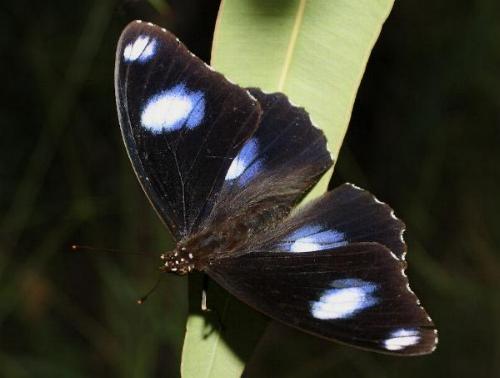
The adult male butterfly is black with a large white spot in middle of each wing. These spots are surrounded by a remarkable purple iridescence when viewed obliquely. The male wingspan is about 8 cms.
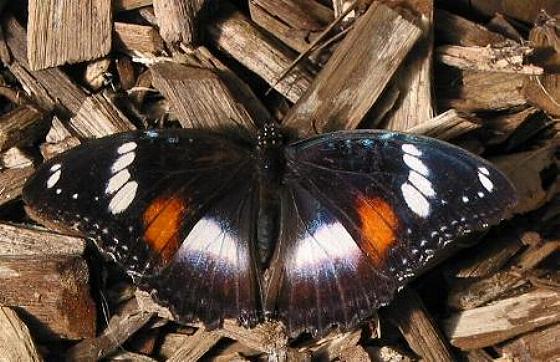
The female is similar but also has an orange mark on each forewing, and is much more variable in coloration.
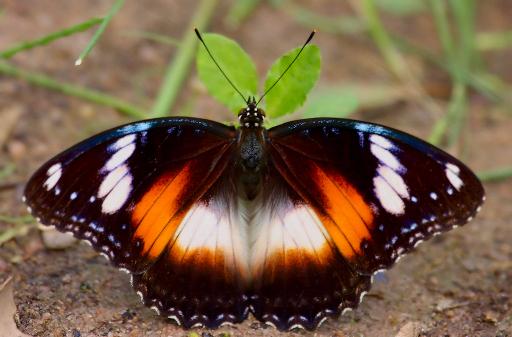
The female is also larger, having a typical wingspan of about 9 cms.
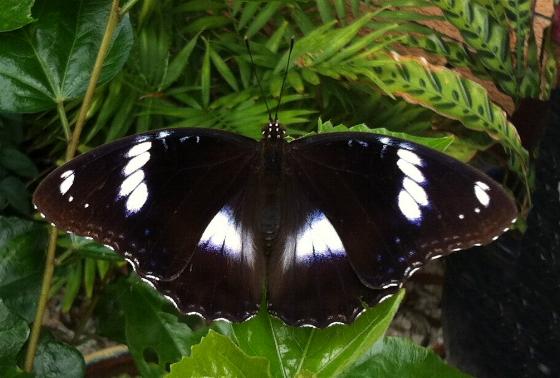
The undersides of the wings of the females are brown with a diagonal white band and a curved arc of white spots on each wing.
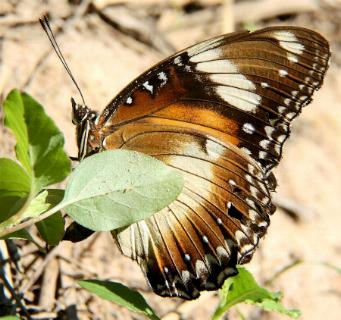
The undersides of the wings of the males are black with a diagonal white band and a curved arc of white spots on each wing.
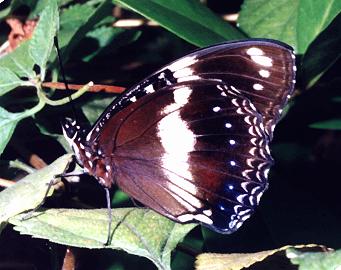
The species is found from the Indian Ocean across south-east Asia to the south Pacific Ocean, including :
and the subspecies nerina (Fabricius, 1775) is found particularly in Australia in:
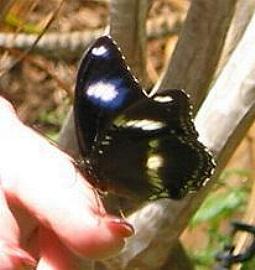
The eggs are spherical and pale yellow or green. They are laid in small irregular groups under leaves of foodplants. The female butterflies are inclined to be protective of plants on which they have laid eggs.
The male butterflies are attacked in the egg by a Wolbachia bacterium. However, some populations are developing immunity to this parasite.
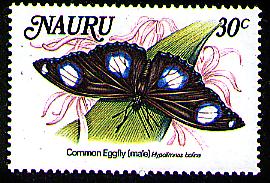 Nauru, 1984 |  Nauru, 1984 |
This is a featured species at the Coffs Harbour Butterfly House. The butterflies may be purchased for release at weddings etc.
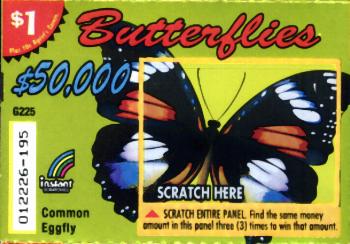
Further reading :
Michael F. Braby,
Butterflies of Australia,
CSIRO Publishing, Melbourne 2000, vol. 2, pp. 567-569.
Frank Jordan & Helen Schwencke,
Create More Butterflies : a guide to 48 butterflies and their host-plants
Earthling Enterprises, Brisbane, 2005, pp. 45, 60.
Ross Kendall,
Images of Butterfly Larvae,
Butterflies and Other Invertebrates Club,
Metamorphosis Australia,
Issue 55 (December 2009), p. 32.
Carl Linnaeus,
Insecta Lepidoptera,
Systema Naturae,
Volume 1, Edition 10 (1760), Class 5, Part 3, p. 479, No. 124.
 caterpillar |  butterflies |  Lepidoptera |  moths |  caterpillar |
(updated 31 March 2011, 4 December 2025)